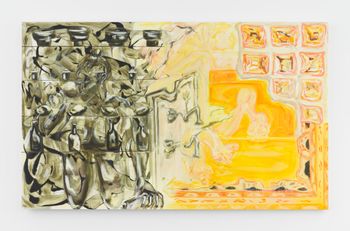VIP Ambassador, Ana Sokoloff’s NY & Latin America Spotlight
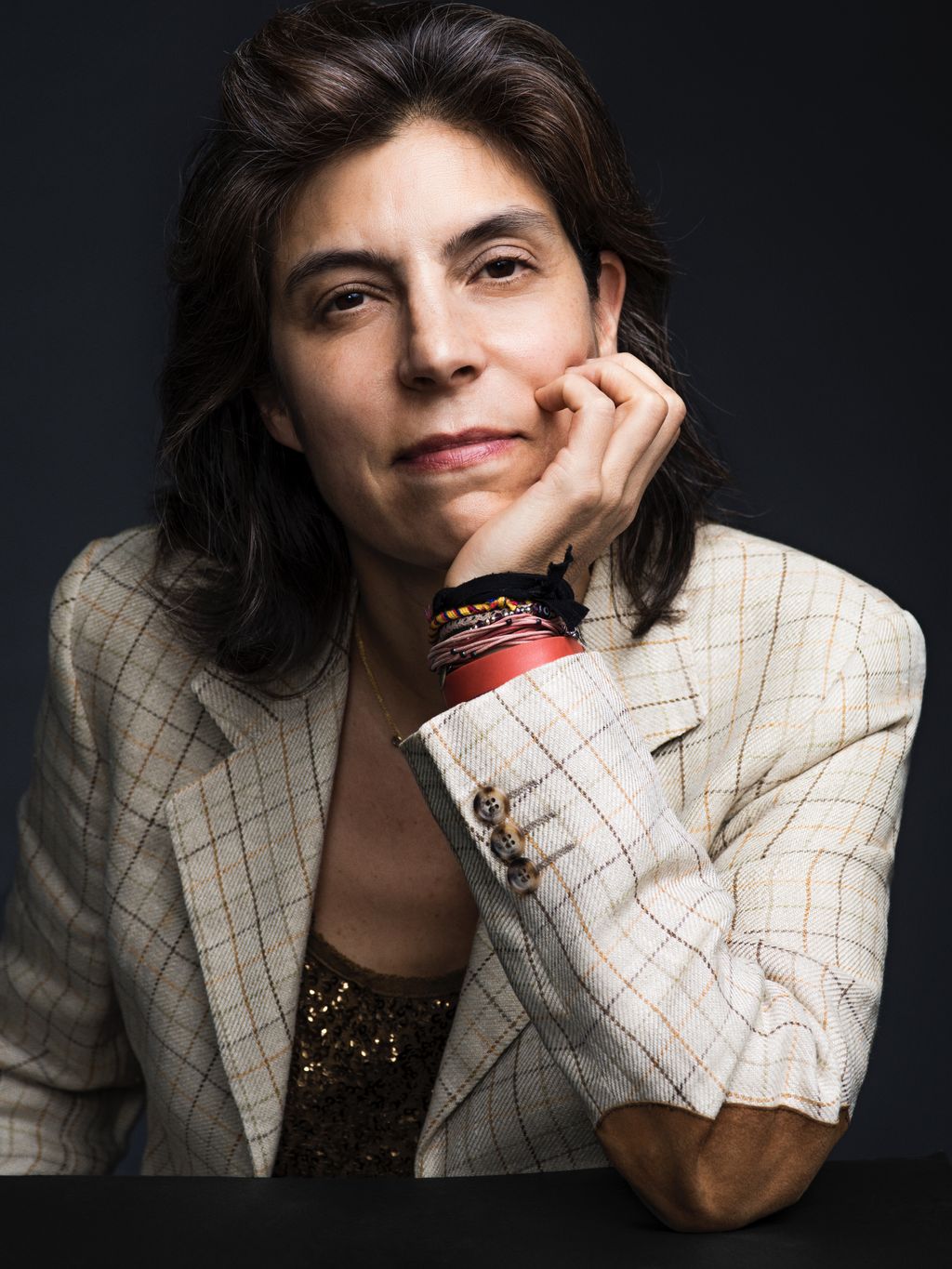
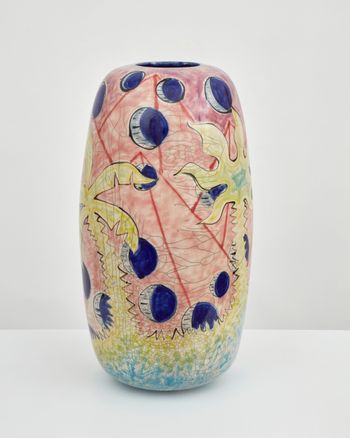
"It is easy to be seduced by the rich heritage of ceramic manufacturing in Mexico and to dwell into this technique as a form of artmaking. For Zhivago Duncan this millenary medium seems to be the perfect vehicle to further explore the evolution of mankind, his investigations of the Pineal gland, and the correlation between “civilization” and the reduction of the gland in the human brain. Here the gland is depicted in blue hues amongst a garden of palm trees. Traditionally palms symbolized richness, today they are associated with tropical weather and vacation."
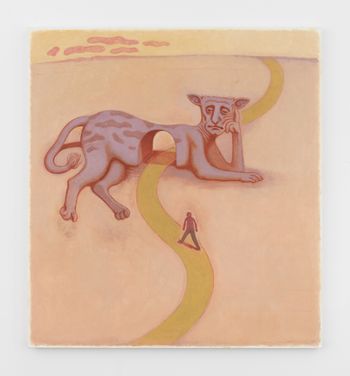
"Mostly because these two works reflect the Zeitgeist of our times. In both cases the boundaries between consciousness and unconsciousness are blurred reflecting a shared feeling of unrest. Both Clayton Schiff and Joe Messer seem to reference an overpowering force that looms upon the subject and the spectator."

"The work by Panayiotis Lukas has the power of sending the spectator into a whirlwind of possible worlds and narratives. Recognizable - yet eerie - fabled characters appear in equally charged surroundings creating non-sequitur dialogues and possible readings."
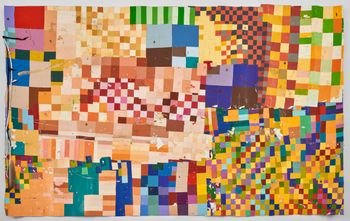
"Have always been intrigued by the way in which William Cordova addresses history and cultural identity through his intrinsic and complex collages. In this particular work he is alluding to a modern form of Martial Arts developed in Peru that revived ancient combat rituals of the Americas. Color and form create complex color compositions that can also be associated with sacred geometries."
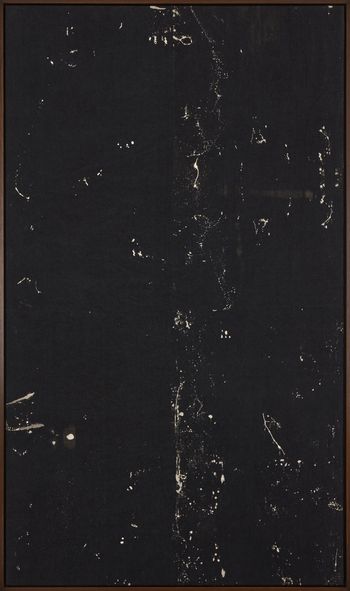
"A longtime admirer of his work, I am intrigued by this new approach to painting, by removing—bleaching as opposed to adding. Armando Andrade Tudela has always had a minimalist approach when making sense of the materials used in his work and avails himself of what is at hand. It is not surprising that he would introduce denim as a surface and as a reference to contemporary culture at large."
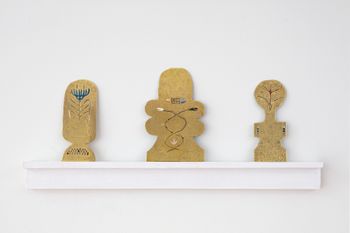
"These objects blur both our understanding of mythology, astrology and anthropology, and the limits of the medium used to construct them. Technically they draw procedures from drawing, engraving, painting and metallurgy. The technical combinations enrich the surface of the artwork while alluding to the precious objects after which they are titled. Likewise, the archetypical inscriptions distort any reading into specific symbolisms or mythical explanation."
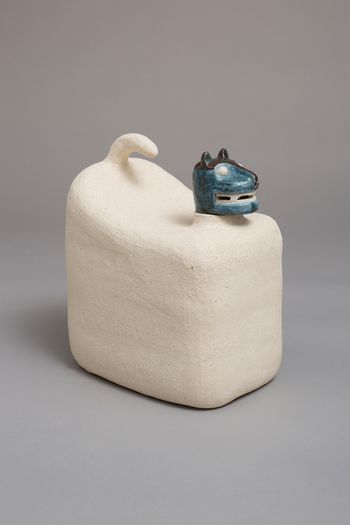
"I admire the humor and references to popular culture that becomes apparent in these vessels. Aside from the references to the signifiers attributed to animals (jaguar=power), they resemble plastic water jugs… commonly reused in non affluent areas as containers for water, gas, oil and other basic needs. A witty critique to social inequalities in Latin America."
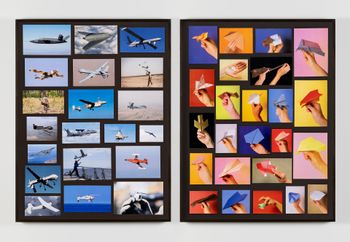
"Aside from the references to the grid as a compositional element, the pairing of drones and paper planes from cut out images of news media and other sources underlines the loss of innocence from childhood to adulthood. With this, a critique to our structures of power (governmental and societal) over fellow humans and nature emanates as the main narrative in Luke Stettner’s work."
